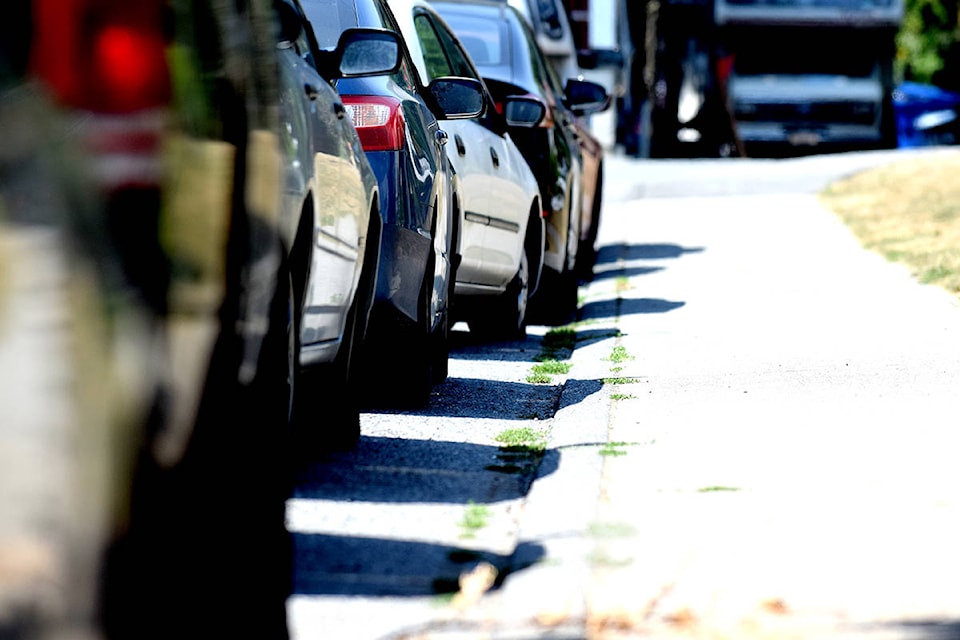Transitioning to a less car-dependent city “is going to be a little painful,” Coun. Ross Siemens said Monday during a discussion over the availability of parking in Abbotsford’s densifying central neighbourhoods.
With the city taking a second look at rules for building in central areas with single-detached homes, a pair of Abbotsford councillors expressed concern that more people in such areas is also going to result in more cars vying for space.
Coun. Moe Gill said he has visited areas where conflicts have sprung up after a lack of parking has left neighbours squabbling over who gets to park where.
Others, meanwhile, have taken it upon themselves to pave over a portion of their front yard, or just park their vehicles on the grass.
“That’s how tight the parking issue is and, as we develop, we’re really going to have to look at this.”
Coun. Les Barkman, meanwhile, suggested that draft guidelines for maximum garage and driveway widths may be too narrow.
“It seems like we’re trying to pack so much in such a little spot,” he said. “A double garage, the way they’re being built, is really not a double garage.”
Mark Neill, the head of the city’s planning department, noted that the draft guidelines for smaller homes on narrower lots would allow for a parking spot in a garage and one – and sometimes two – in a driveway.
“On the smaller lots, it would be a bit of a challenge to provide more than two or three stalls,” he acknowledged.
He also added that such homes would be relatively small – around 1,400 square feet – and have no basements or secondary suites.
The concerns about parking in densifying neighbourhoods are nothing new, but illustrate a challenge as Abbotsford promotes alternate forms of transportation.
The city’s official community plan is built around the idea that more compact neighbourhoods will better allow people to get around by walking, biking and transit.
In recent years, urban planners in North America have pushed back against the idea that land-use rules should reserve space for cars.
Required parking spaces, the idea goes, decreases the supply of land for housing itself while increasing distances between people and the places they want to go – which, in turn, inevitably leads more people to choose to drive over more sustainable forms of transportation.
But breaking that cycle will be difficult, Siemens suggested.
“We designed our communities to be car-dependent,” he said. “That transition is going to be a little painful, building that transit system. Parking is going to be a challenge … neighbours are going to have to work together.
“We can look at those issues as we go forward, but the harsh reality of life is that change is coming to our community, so how do we manage that in a thoughtful way?”
Siemens continued: “In order to be bold and transparent about our future and the future of our community … we are going to have some pinch points and I think it’s healthy that we are having these discussions.”
Staff are currently creating and testing draft guidelines that will govern how new homes are built in areas designated “infill” and zoned for detached houses.
Infill areas include most neighbourhoods south of Maclure Road and between Sumas Way in the east and Fishtrap Creek Park in the west.
The new draft rules, crafted after three public information meetings, would reduce the maximum floor space and height of new homes.
@ty_olsen
tolsen@abbynews.com
Like us on Facebook and follow us on Twitter.
